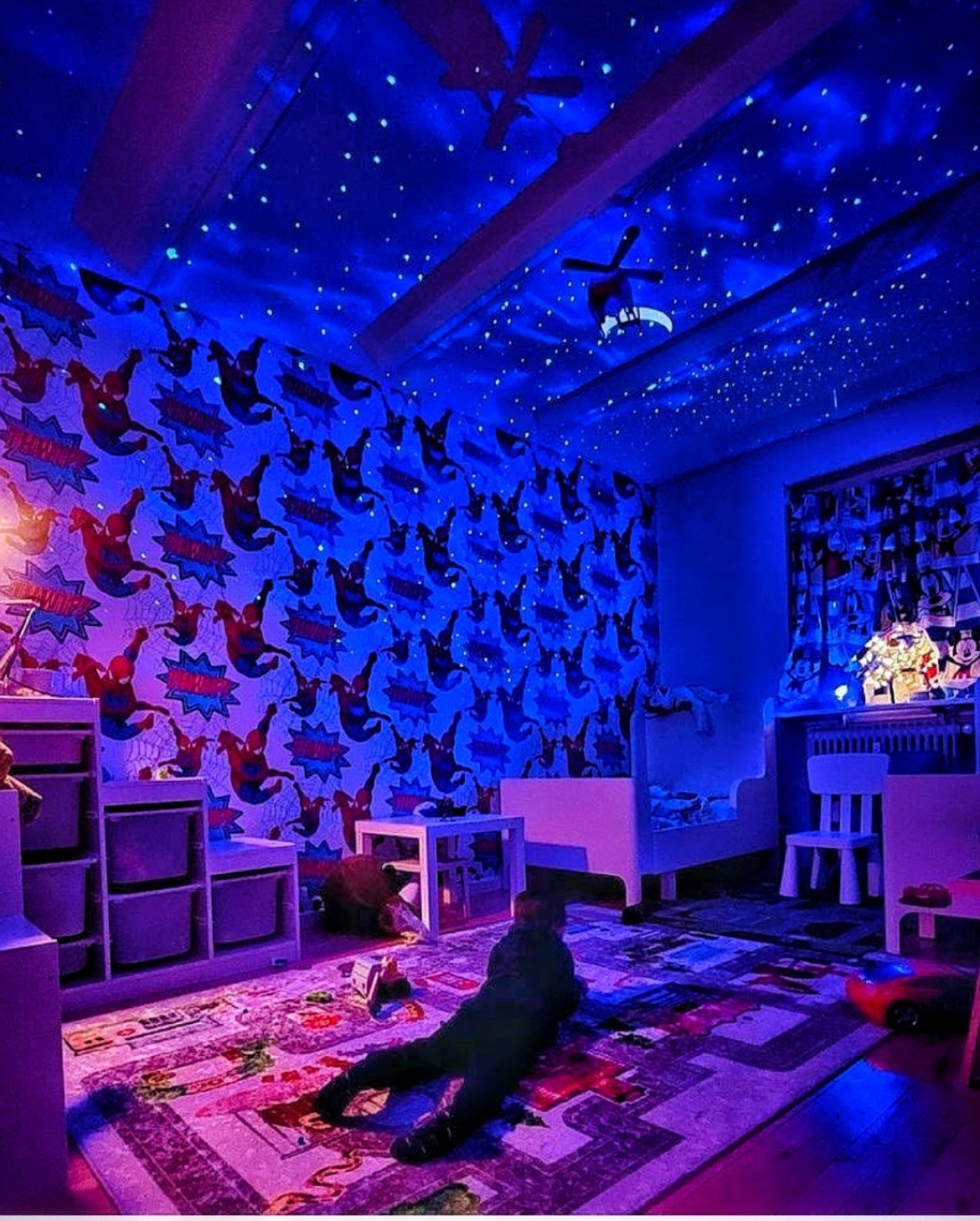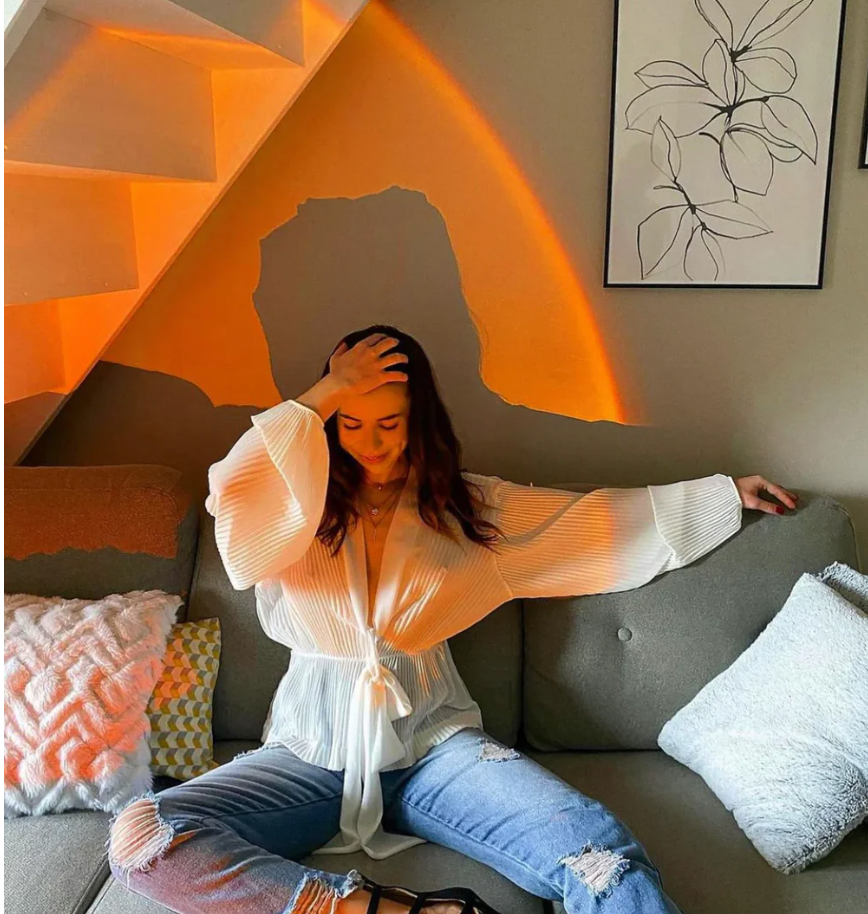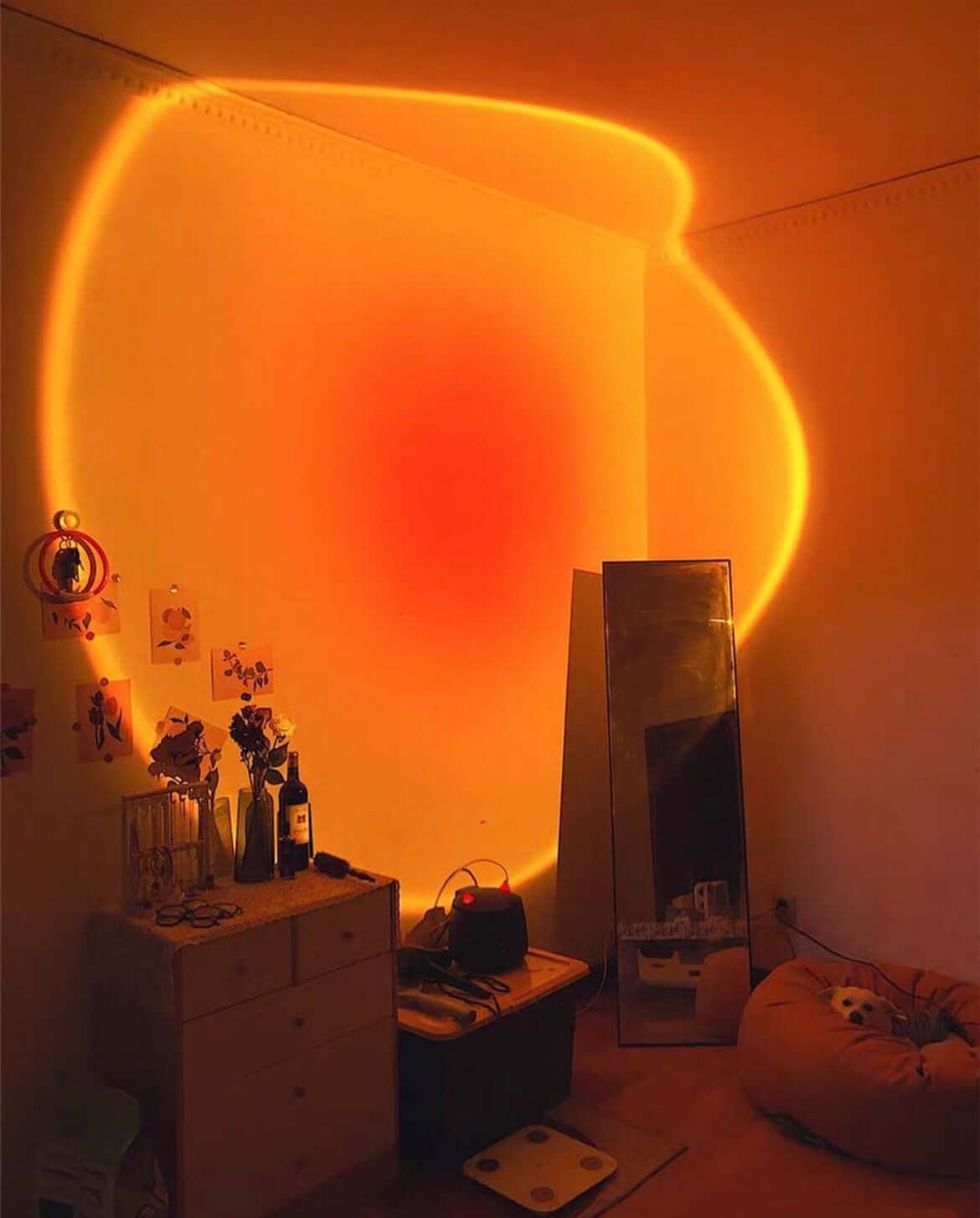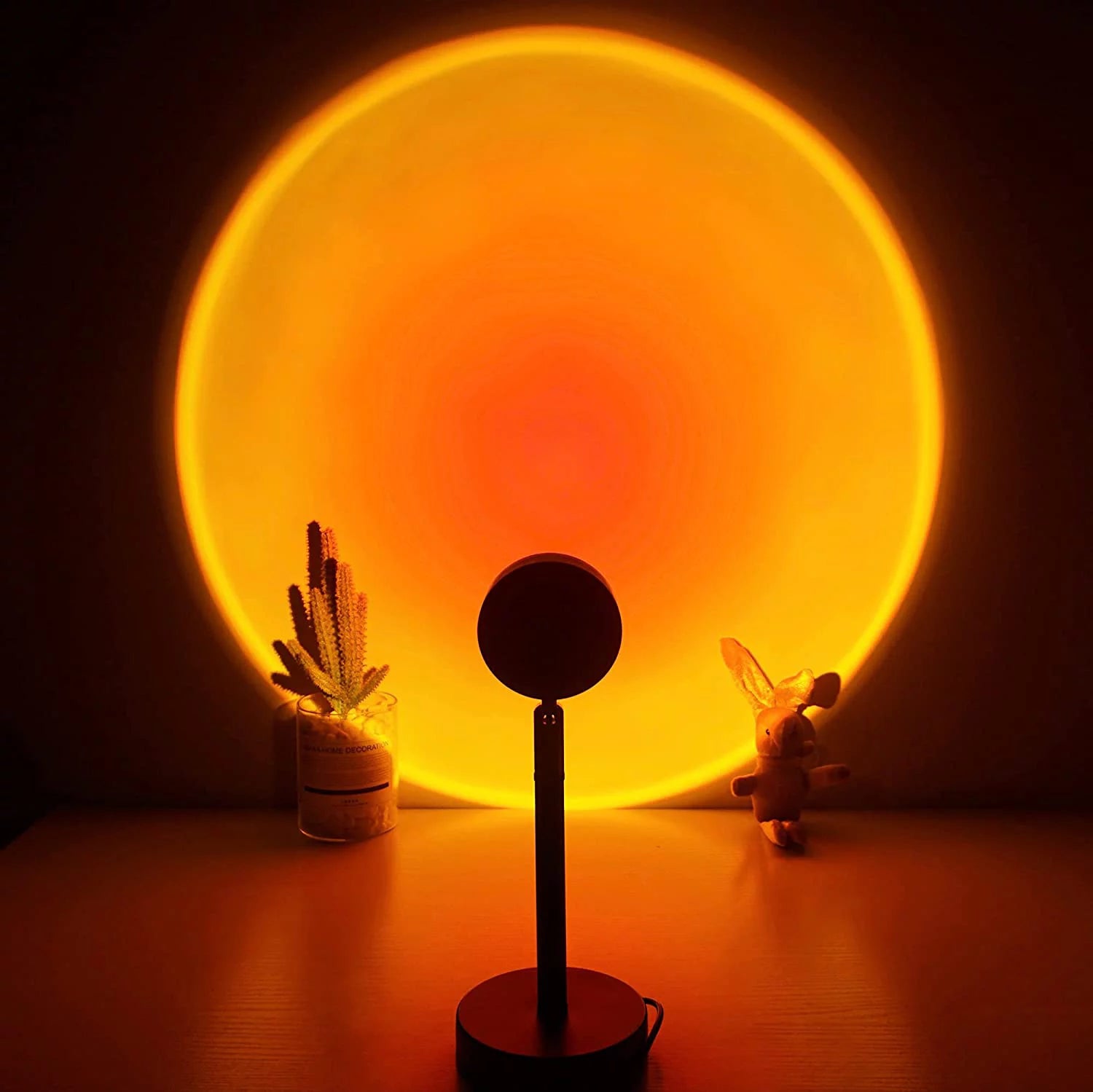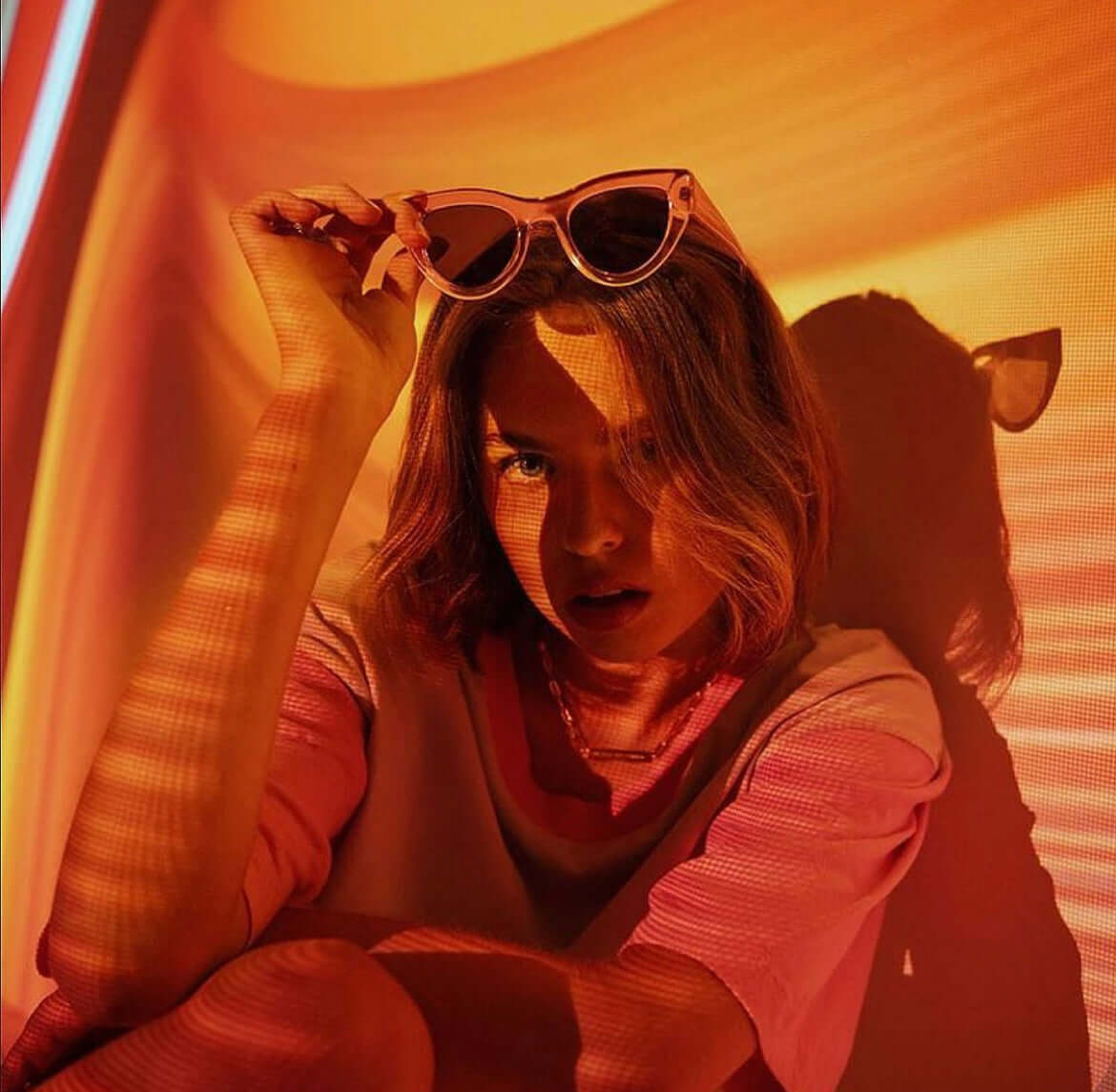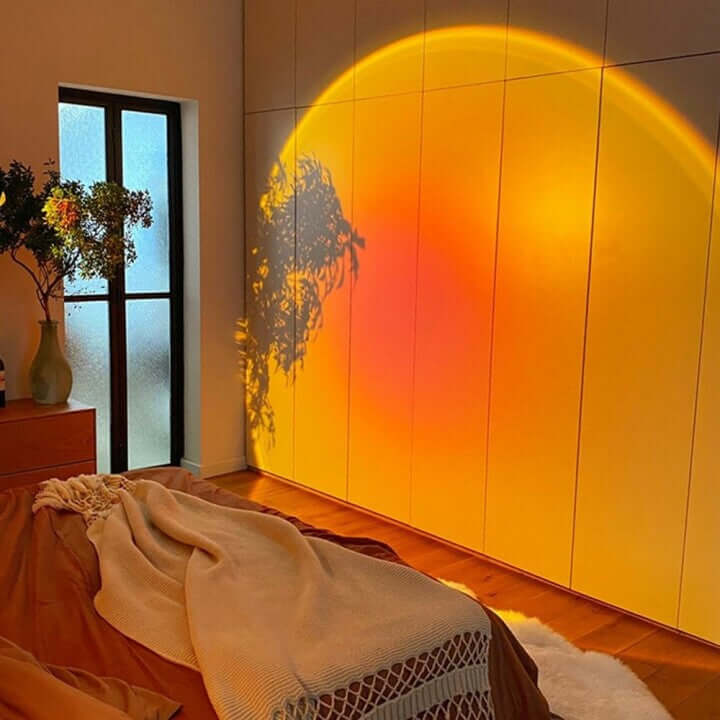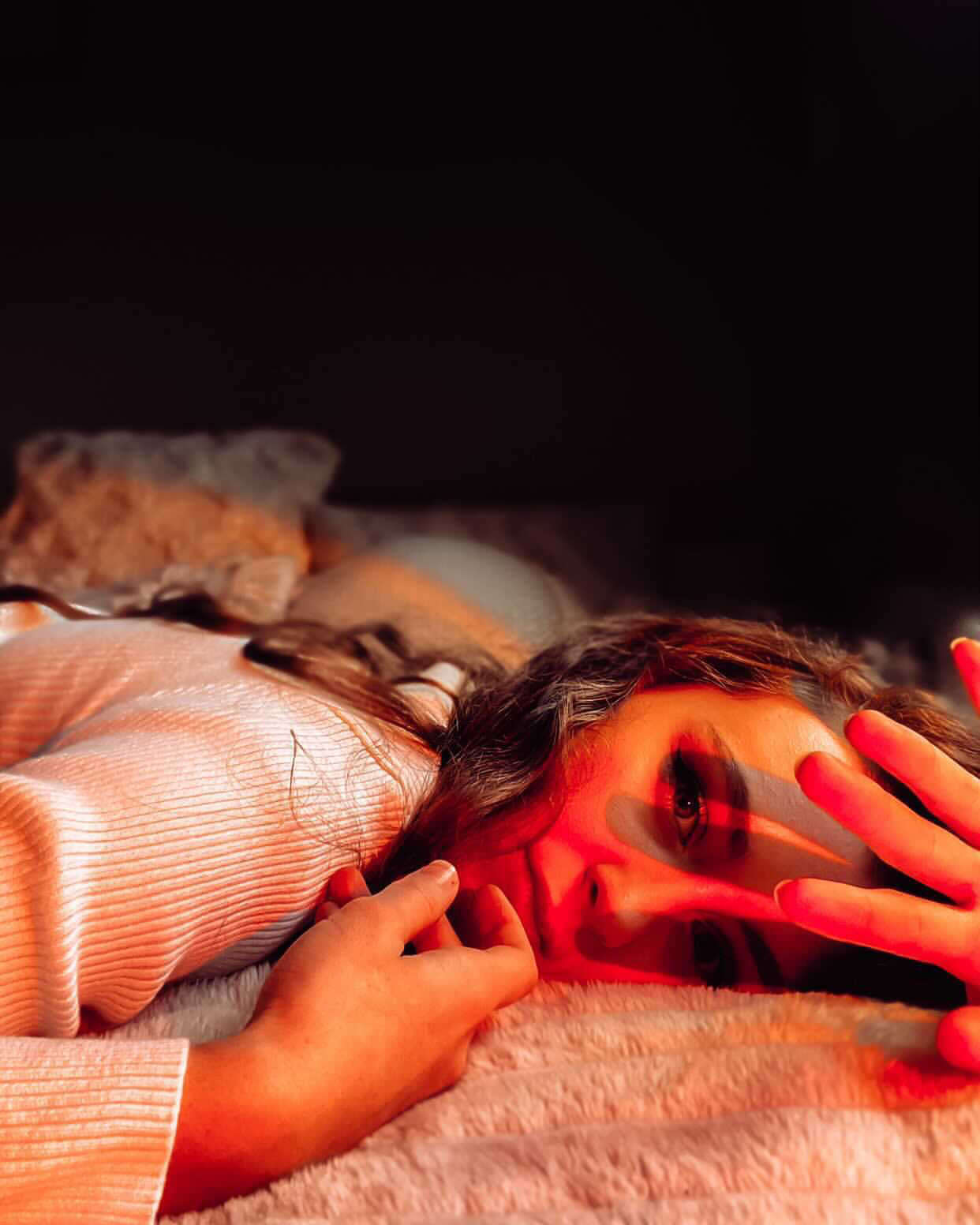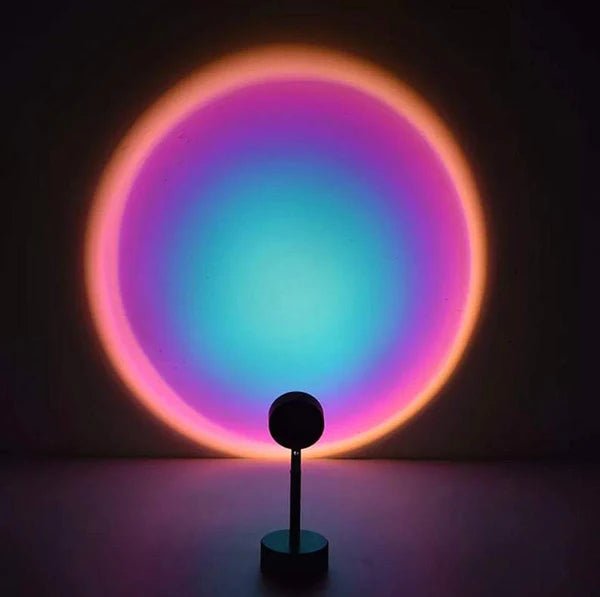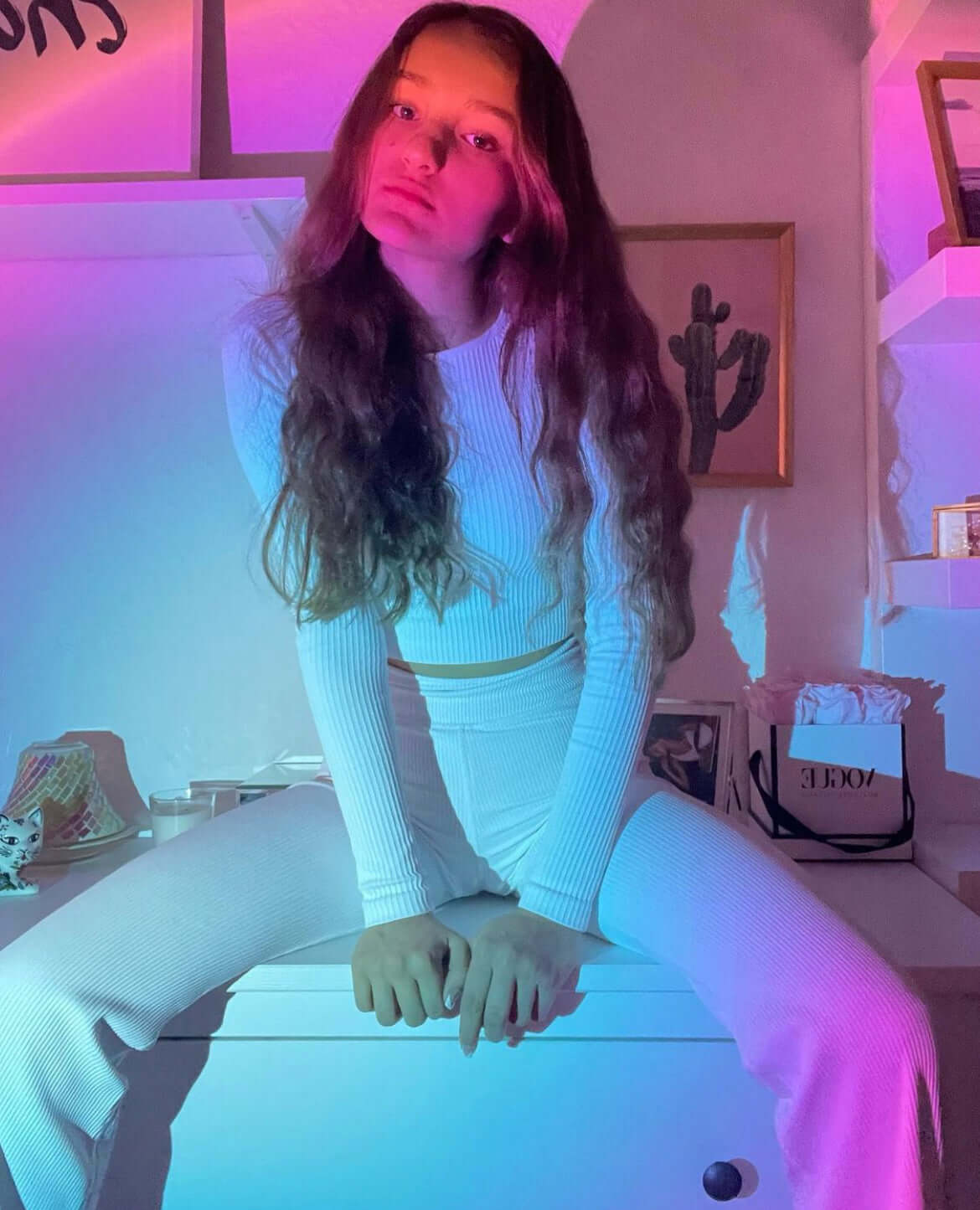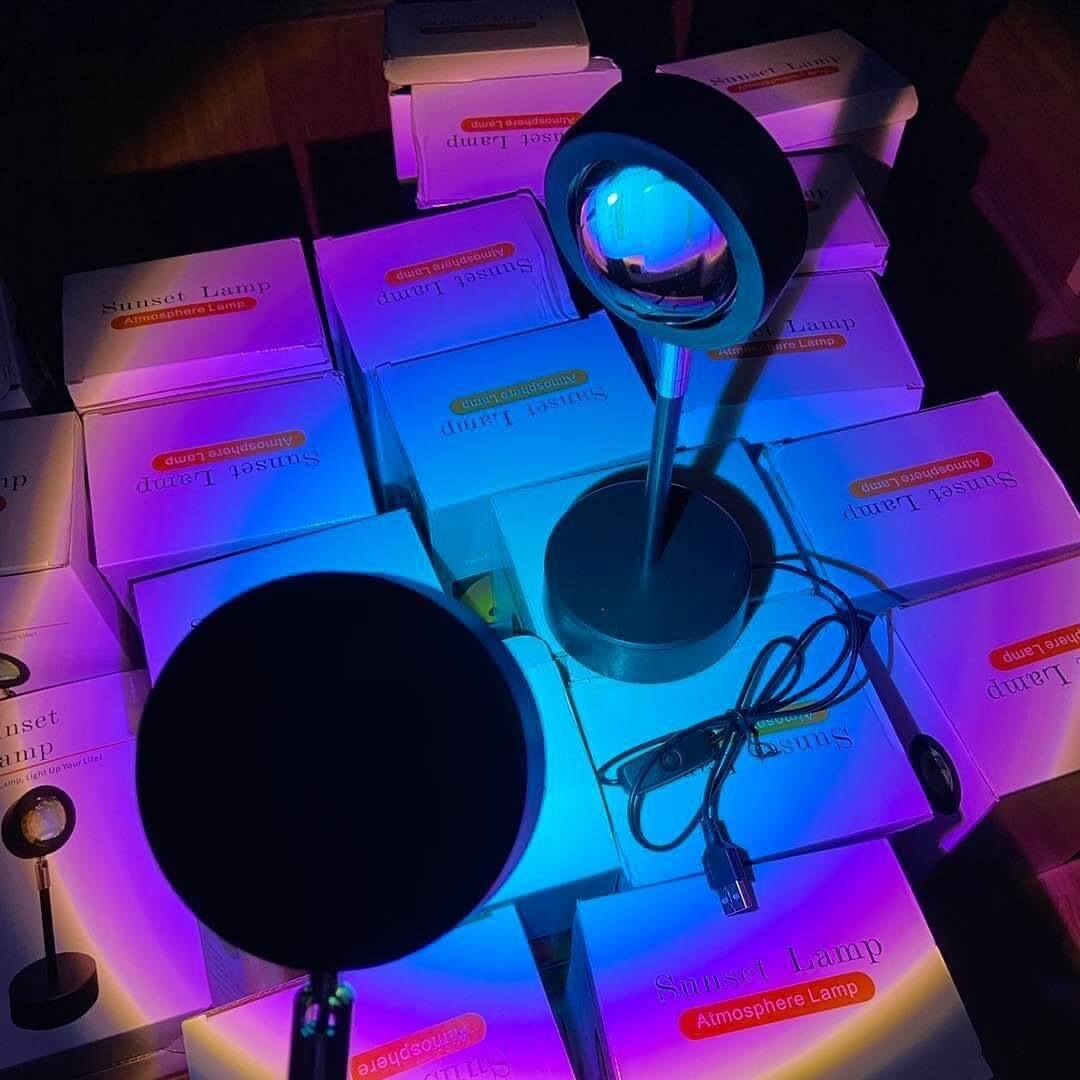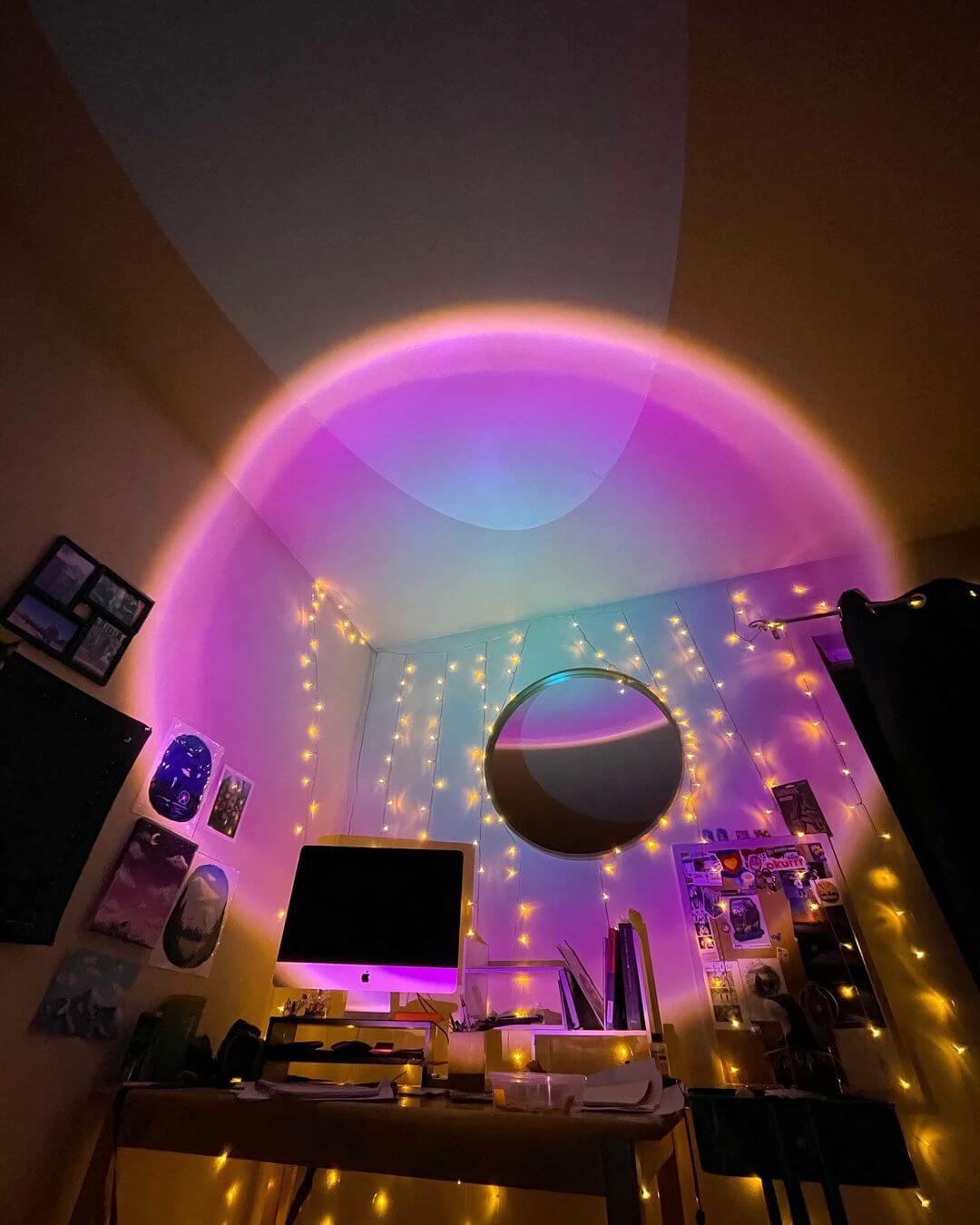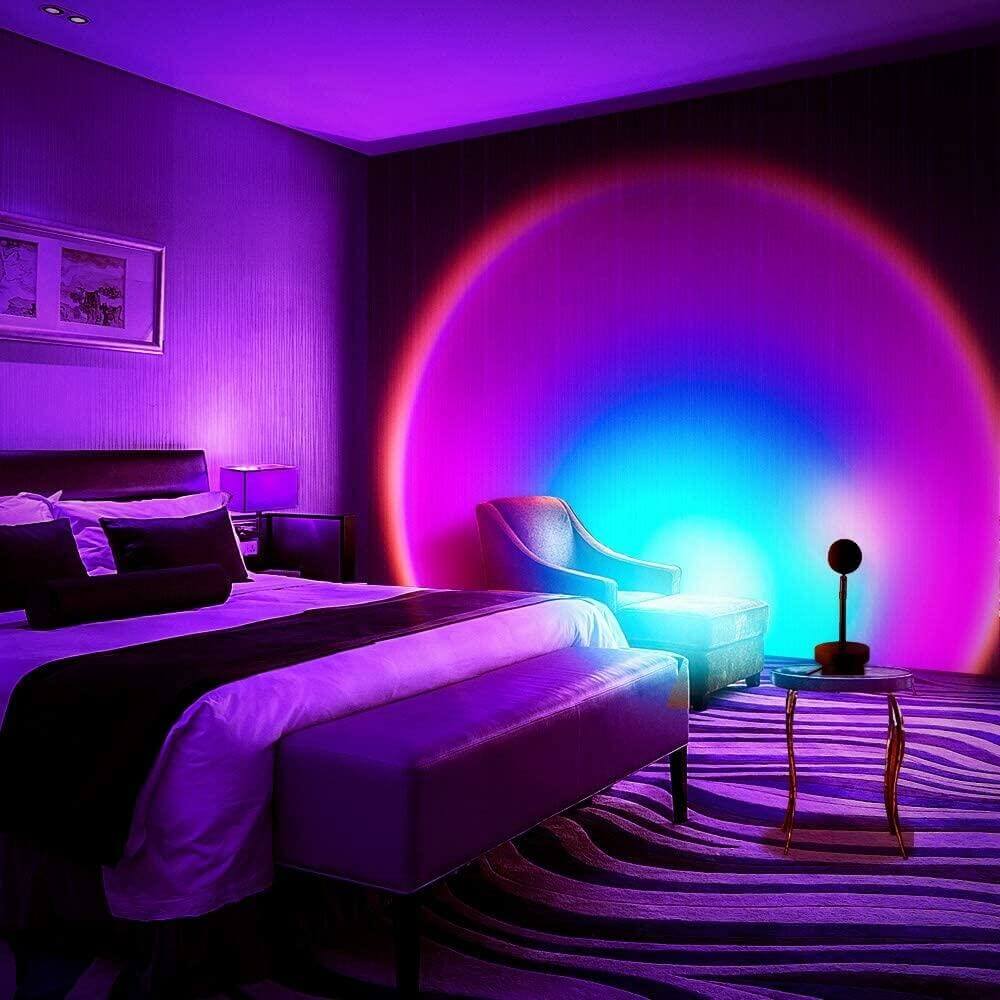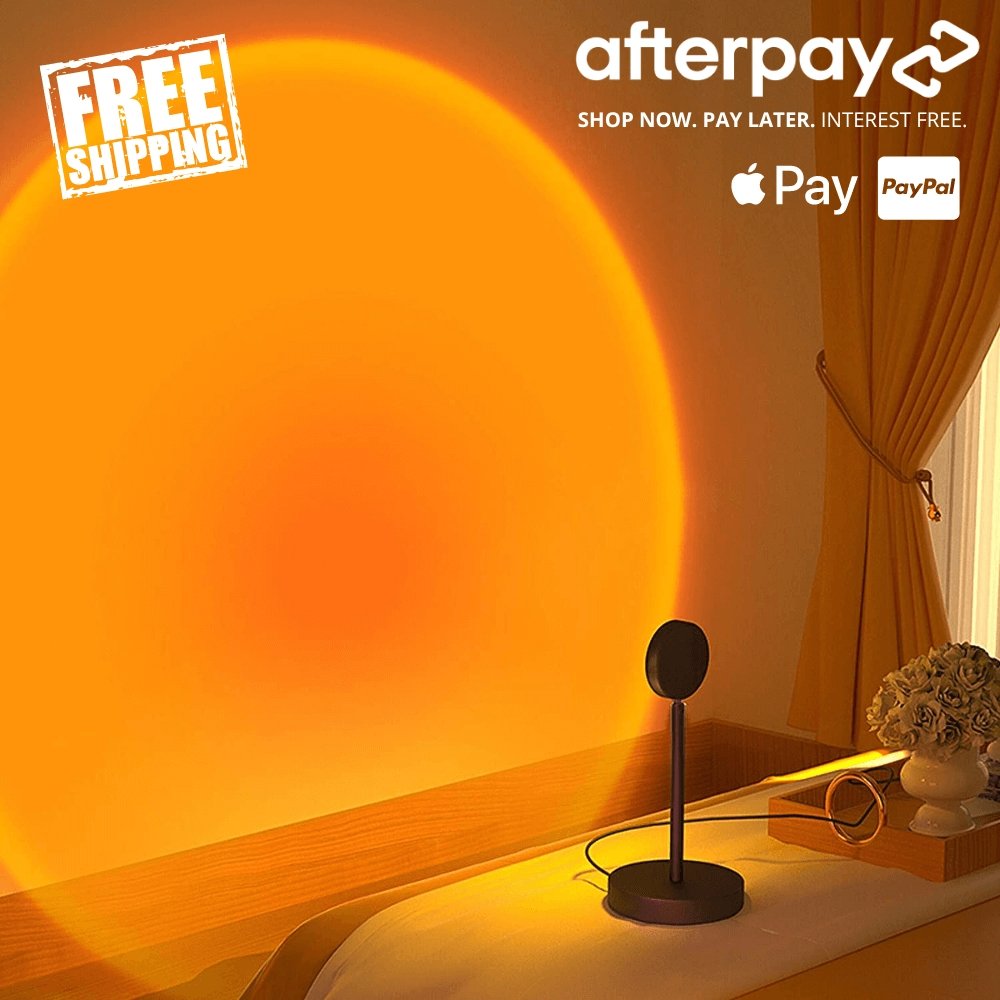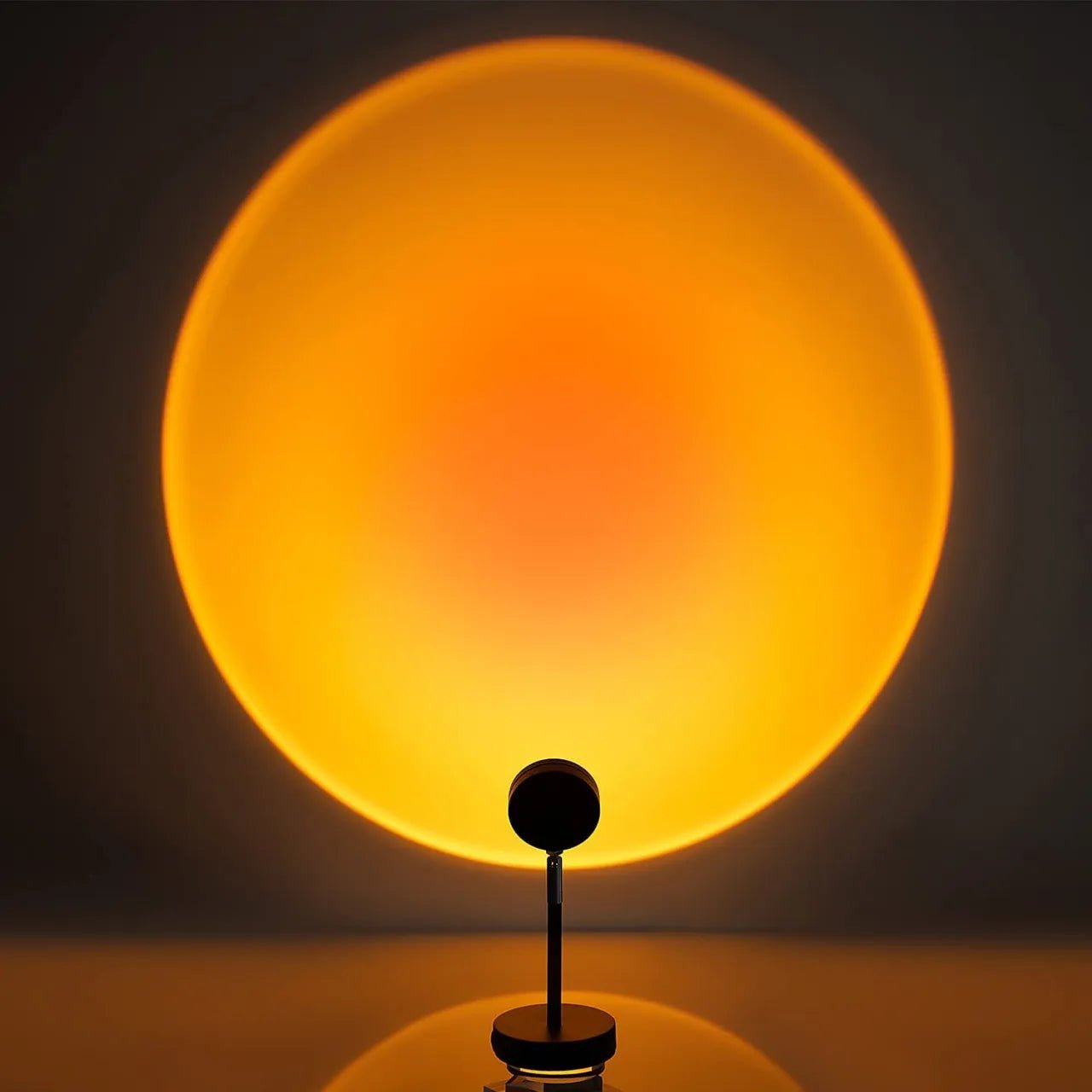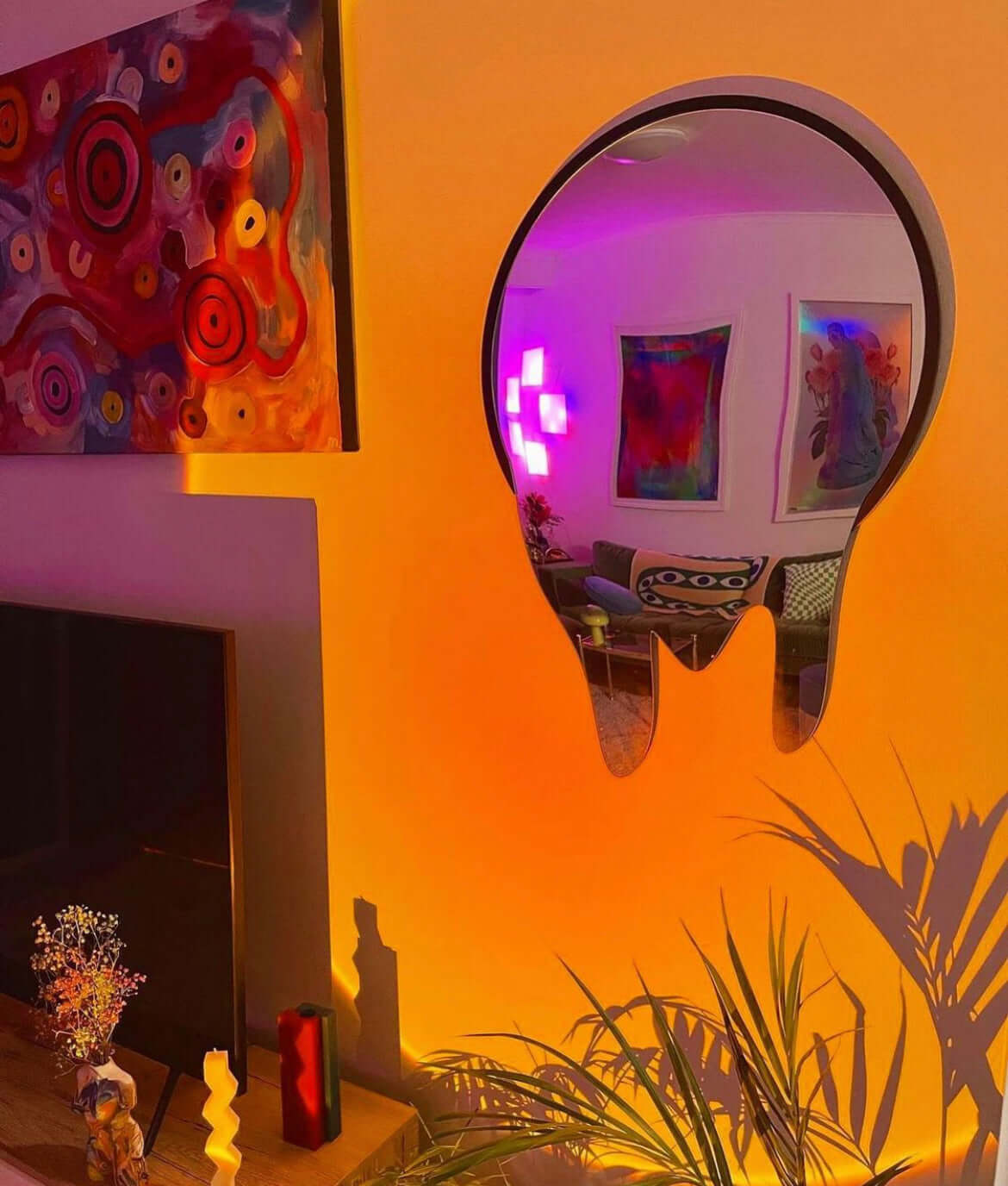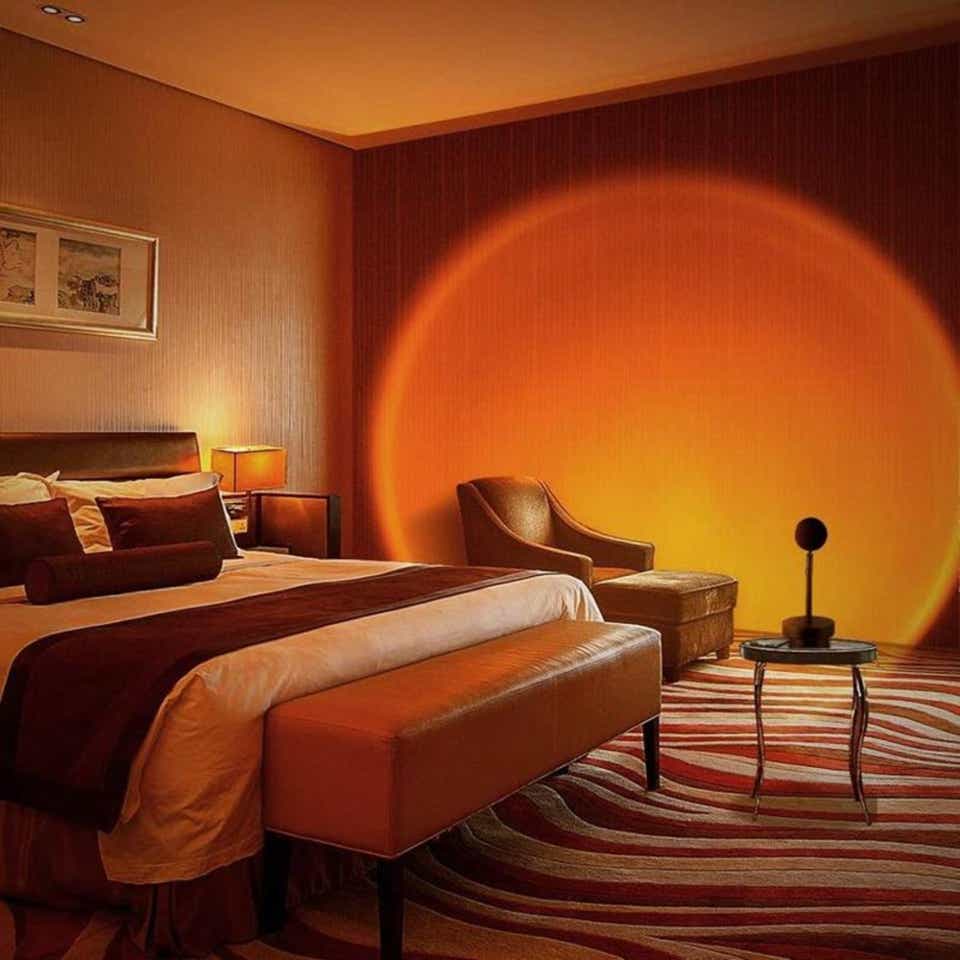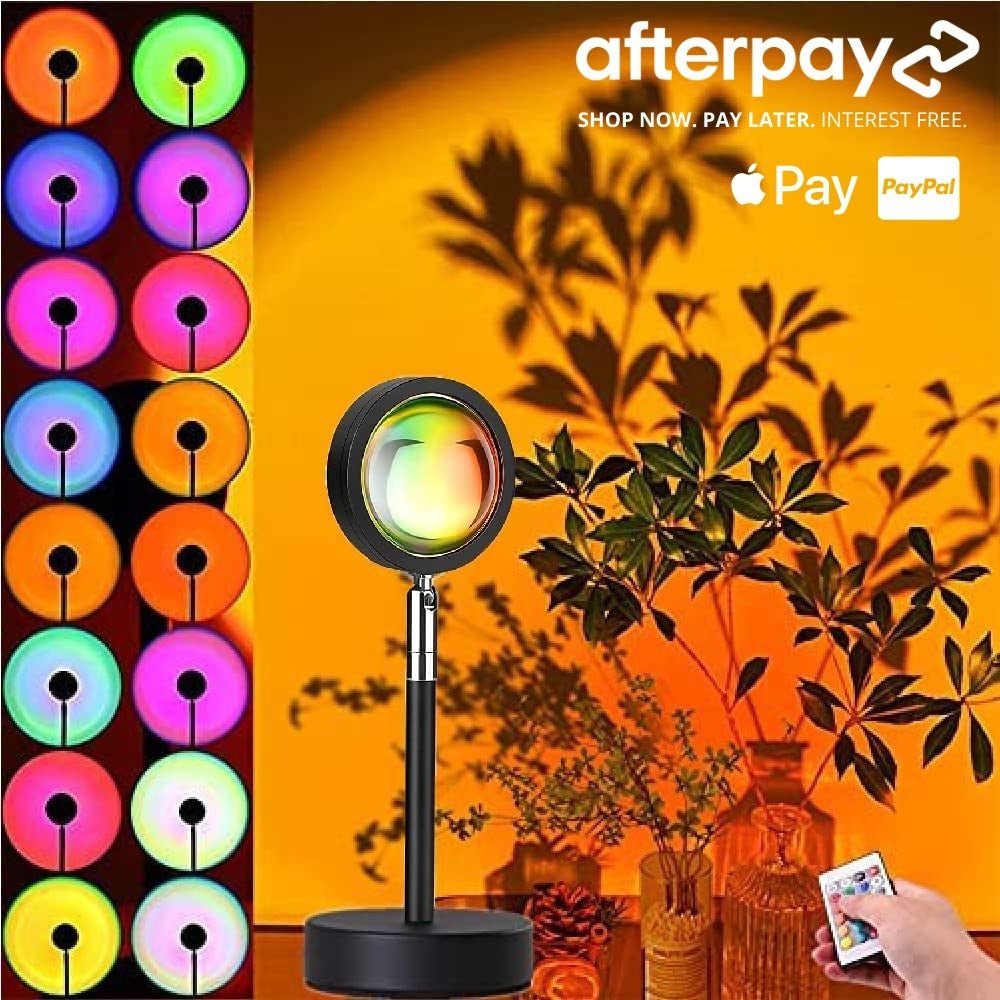Sunset Lamp vs. Regular Lighting: What Makes the Difference?
What’s the difference between sunset lamps and regular lighting ? Sunset lamps project warm, mood-enhancing light that mimics natural sunsets, ideal for relaxation and ambiance. In contrast, regular lighting focuses on task visibility and practicality. In the UK and Australia, combining both creates a balanced, functional, and atmospheric home environment.
Lighting is one of the most powerful yet often overlooked elements in our homes. It affects everything from our ability to perform tasks to our mood and even our health. While traditional lighting solutions have focused primarily on functionality—illuminating spaces so we can see—newer options like sunset lamps prioritize atmosphere, emotion, and aesthetic impact.
If you've ever walked into a room bathed in the warm glow of sunset light and felt an immediate sense of calm, or noticed how a standard overhead light can make the same space feel clinical and stark, you've experienced firsthand the profound difference lighting can make. But what exactly sets sunset lamps apart from regular lighting, and why might you want to incorporate them into your home?
In this comprehensive comparison, we'll explore the fundamental differences between sunset lamps and conventional lighting options. From technical specifications and light quality to psychological effects and practical applications, we'll help you understand when and why you might choose one over the other—or how to effectively combine both for optimal home lighting.
👉 Shop Sunset Lamp & Save 20%
Understanding Regular Lighting: Types and Characteristics
Before we can appreciate what makes sunset lamps special, let's establish a baseline understanding of conventional lighting options commonly found in homes.
Common Types of Regular Lighting
Ambient (General) Lighting
This is your primary source of light in a room, typically provided by ceiling fixtures, recessed lighting, or track lighting. Its main purpose is to illuminate the entire space evenly, allowing for safe navigation and basic activities. Most ambient lighting produces a relatively neutral white light, though color temperature can vary.
Task Lighting
Designed to illuminate specific areas for particular activities, task lighting includes desk lamps, under-cabinet lights, and reading lamps. These typically produce a focused, brighter light to enhance visibility for detailed tasks like reading, cooking, or working.
Accent Lighting
Used to highlight specific features or create visual interest, accent lighting includes wall sconces, picture lights, and spotlights. While more decorative than purely functional, traditional accent lighting still primarily uses direct, focused light rather than diffused color projections.
Light Sources in Regular Lighting
Incandescent Bulbs
These traditional bulbs produce light by heating a filament until it glows. They typically emit a warm light (2700-3000K) but are energy-inefficient and have largely been phased out in favor of more sustainable options.
Fluorescent Lights
Common in offices and kitchens, fluorescent lighting produces light when electricity excites mercury vapor. Traditional fluorescents emit a cooler, sometimes harsh light (3500-4100K) that many find unflattering, though newer options offer warmer tones.
LED Lights
Light-emitting diodes represent the current standard in energy-efficient lighting. Available in virtually any color temperature (from warm 2700K to cool 6500K), LEDs offer versatility and longevity but typically produce directional rather than diffused light.
Characteristics of Regular Lighting
Directional Illumination
Most conventional lighting is designed to illuminate rather than project. Light radiates outward from the source, creating relatively uniform brightness in the surrounding area rather than creating patterns or gradients on surfaces.
Practical Focus
Traditional lighting prioritizes functionality—providing sufficient illumination for activities—with aesthetic considerations often secondary. The light itself is a tool rather than a feature.
Fixed Color Temperature
While dimmable options exist, most conventional lights maintain a consistent color temperature regardless of brightness level. When you dim a standard bulb, it becomes less bright but doesn't shift toward the red end of the spectrum as natural light does at sunset.
Sunset Lighting: A Different Approach to Illumination
Sunset lamps represent a fundamental shift in how we think about home lighting. Rather than simply illuminating a space, they transform it through color, projection, and atmosphere.
Technical Characteristics of Sunset Lamps
Projection vs. Illumination
The most significant difference between sunset lamps and regular lighting is that sunset lamps are designed to project rather than illuminate. Using specialized lenses, they cast a circular or semi-circular gradient of color onto walls, ceilings, or other surfaces. This creates a focal point and visual interest rather than general brightness.
Color Spectrum
While regular lighting typically produces white light (though with varying color temperatures), sunset lamps specifically emit the warm oranges, reds, and yellows characteristic of natural sunsets. This limited but intentional color palette is key to their effect.
Light Distribution
Regular lighting distributes light relatively evenly throughout a space. In contrast, sunset lamps create intentional gradients and variations, mimicking the natural light patterns of a setting sun. This uneven distribution creates depth, dimension, and visual interest.
The Science Behind the Sunset Effect
Natural Sunset Physics
Natural sunsets appear red and orange because when the sun is low on the horizon, its light must travel through more of the Earth's atmosphere. This causes shorter wavelengths (blues and greens) to scatter, while longer wavelengths (reds and oranges) pass through—a phenomenon called Rayleigh scattering.
How Sunset Lamps Recreate This Effect
Quality sunset lamps use LED technology combined with specially designed color filters and projection lenses to recreate this natural phenomenon. The best models carefully calibrate their color spectrum to match the specific wavelengths present in natural sunset light.
For a deeper exploration of the science behind sunset lighting, check out our article on The Science Behind Sunset Lighting and Its Effects on Mood.
Aesthetic Qualities
Atmosphere Creation
While regular lighting reveals a space, sunset lighting transforms it. The warm, directional glow creates an immediate atmosphere that changes how we perceive and experience a room. This atmospheric quality is central to the appeal of sunset lamps.
Dynamic vs. Static
Regular lighting tends to be static—once set up, it creates a consistent effect. Sunset lamps, with their adjustable positioning and projection capabilities, allow for more dynamic and changeable effects. Slight adjustments can dramatically alter how the light interacts with your space.
Focal Point Creation
Sunset lamps naturally create a visual focal point in any room. The circular projection draws the eye and can highlight architectural features or complement existing decor in ways that regular lighting typically doesn't.
Psychological and Physiological Effects: How Different Lighting Affects Us
The differences between sunset lamps and regular lighting extend beyond the technical and aesthetic—they can actually affect how we feel and function in our spaces.
Circadian Rhythm Considerations
Blue Light and Alertness
Regular lighting, particularly cooler LED and fluorescent options, contains significant blue light wavelengths. While beneficial during daytime hours for promoting alertness and concentration, these blue wavelengths can disrupt circadian rhythms when used in the evening by suppressing melatonin production.
Warm Light and Relaxation
The warm, red-orange light produced by sunset lamps contains minimal blue wavelengths. This makes it potentially less disruptive to natural sleep cycles when used in evening hours. Many users report feeling naturally more relaxed and ready for rest when using sunset lighting in the evening.
Mood and Emotional Responses
Clinical vs. Cozy
Bright, cool-toned regular lighting (especially fluorescent) can create what many perceive as a clinical or institutional feeling. In contrast, the warm tones of sunset lamps evoke associations with natural phenomena we find inherently pleasing—sunsets, fireplaces, and candlelight—creating a sense of coziness and comfort.
Stress Reduction Potential
Some research suggests that exposure to warm-toned light in the evening may help reduce stress and promote relaxation. While sunset lamps shouldn't be considered therapeutic devices, many users report subjective feelings of calm and wellbeing when using them.
Social Dynamics
Conversation and Connection
Lighting significantly impacts social interactions. Bright, overhead lighting can create a more formal, task-oriented atmosphere, while the warm, directional glow of sunset lamps tends to create a more intimate setting that many find conducive to relaxed conversation and connection.
Perception of Time
Interestingly, the type of lighting in a space can affect our perception of time. Spaces lit with warm, sunset-like lighting often encourage people to linger longer and engage more deeply—a phenomenon restaurant designers have long understood and utilized.
Practical Applications: When to Use Each Type of Lighting
Understanding the differences between sunset lamps and regular lighting helps us make informed choices about when and how to use each for optimal results.
When Regular Lighting Shines
Task-Oriented Activities
For activities requiring visual clarity and detail—cooking, reading, working, crafting—regular lighting, particularly task lighting, remains the practical choice. The even, bright illumination reduces eye strain and enhances visibility.
Morning Routines
During morning hours, cooler, brighter regular lighting can help signal to your body that it's time to be alert and active. This aligns with our natural circadian rhythms and can help establish healthy wake-sleep patterns.
Cleaning and Maintenance
When you need to see every detail—like when cleaning or performing home maintenance—bright, even regular lighting is essential. Sunset lamps, while beautiful, don't provide the uniform illumination needed for these tasks.
When Sunset Lighting Excels
Evening Relaxation
As day transitions to evening, switching from regular lighting to the warm glow of a sunset lamp can signal to your body and mind that it's time to wind down. This makes sunset lamps ideal for evening relaxation spaces like living rooms and bedrooms.
Social Gatherings
The warm, flattering light of sunset lamps creates an inviting atmosphere for social gatherings. The directional nature of the light creates natural areas of brightness and shadow, adding depth and interest to your space while making everyone look their best.
Meditation and Mindfulness
The calming qualities of sunset lighting make it an excellent choice for spaces dedicated to meditation, yoga, or mindfulness practices. The warm glow creates a natural focal point that can help center attention and create a sense of tranquility.
Photography and Content Creation
The dramatic, warm light produced by sunset lamps creates photogenic conditions that many photographers and content creators prize. For more on this application, see our article on Top 10 Ways to Use Your Sunset Lamp for Photography and Social Media.
Creating a Balanced Lighting Plan
Layered Lighting Approach
The most effective home lighting plans incorporate multiple types of lighting in layers. Consider combining:
- Ambient regular lighting for general illumination
- Task lighting for specific activities
- Sunset lamps for atmosphere and evening use
Time-Based Lighting Transitions
Consider how your lighting needs change throughout the day, and plan accordingly:
- Morning: Brighter, cooler regular lighting to promote alertness
- Daytime: Natural light supplemented with task lighting as needed
- Evening: Gradual transition to warmer lighting, incorporating sunset lamps
- Bedtime: Minimal, very warm lighting to promote melatonin production
Room-Specific Considerations
Different rooms have different lighting needs:
- Kitchen: Prioritize task lighting with sunset lamps as supplementary evening ambiance
- Bedroom: Balance task lighting for reading with sunset lamps for relaxation
- Living Room: Create flexible lighting zones with a mix of regular and sunset lighting
- Bathroom: Include both functional bright lighting for grooming and sunset options for relaxing baths
For creative ideas on incorporating sunset lighting into different rooms, see our article on How Sunset Lamps Can Transform Your Home Ambiance.
Making Your Choice: Factors to Consider
When deciding between regular lighting and sunset lamps—or determining how to combine them—consider these key factors:
Space Considerations
Room Size and Layout
Larger rooms may benefit from multiple lighting sources, including both regular fixtures and sunset lamps positioned strategically. In smaller spaces, a single adjustable sunset lamp might provide sufficient supplementary lighting alongside minimal regular fixtures.
Wall Colors and Surfaces
The effect of a sunset lamp is influenced by the surface it projects onto. Light-colored, smooth walls will reflect the colors most vividly, while textured or dark surfaces will create different effects. Consider your existing decor when choosing lighting.
Lifestyle Factors
Daily Activities
Consider how you use each space. Rooms primarily used for detail-oriented tasks will need more regular lighting, while spaces dedicated to relaxation can lean more heavily on sunset lighting.
Household Members
Different people have different lighting preferences and needs. Older adults often need more light for reading and other tasks, while children might enjoy the playful qualities of sunset projections.
Budget Considerations
Initial Investment
Quality sunset lamps range from approximately $20 for basic models to $100+ for premium options with additional features. This is comparable to or less than many regular lighting fixtures, making them an affordable way to transform a space.
Energy Efficiency
Both modern regular lighting (particularly LED) and sunset lamps are relatively energy-efficient. Sunset lamps typically use 5-15 watts, similar to LED bulbs, making their operating cost minimal.
Finding Your Perfect Sunset Lamp
If you've decided to incorporate sunset lighting into your home, choosing the right lamp is crucial. At Galactic Night, our GALACTICNIGHT™ - Sunset Lamp (2024 Edition) offers the perfect balance of quality and affordability.
Key features to look for include:
- Adjustable positioning (at least 180-degree rotation)
- Stable base that won't tip easily
- Quality LED light source for true color reproduction
- Convenient power options (USB or standard plug)
For more detailed guidance on choosing a sunset lamp, see our articles on Sunset Projection Lamps: Features to Look for Before Buying and How to Choose the Perfect Sunset Lamp for Your Space.
Conclusion: Complementary Rather Than Competitive
The comparison between sunset lamps and regular lighting isn't about determining which is "better" in an absolute sense—it's about understanding their different purposes and how they can work together to create optimal living environments.
Regular lighting excels at providing the functional illumination we need for daily tasks and activities. It's the foundation of any home lighting plan, ensuring spaces are safe, navigable, and suitable for detail-oriented activities.
Sunset lamps offer something different but equally valuable—they transform the emotional quality of a space, potentially support healthy sleep-wake cycles, and add a dimension of beauty and interest that purely functional lighting cannot provide.
The most effective approach for most homes is to thoughtfully combine both types of lighting, using each where and when it shines brightest. This layered approach allows you to adapt your environment to different activities, times of day, and moods.
By understanding the unique characteristics and benefits of both sunset lamps and regular lighting, you can make informed choices that enhance both the functionality and the feeling of your home—creating spaces that not only serve your practical needs but also support your wellbeing and delight your senses.
Ready to experience the difference sunset lighting can make in your home? Explore our sunset lamp collection and discover the perfect complement to your existing lighting.
👉 Shop Sunset Lamp & Save 20%
FAQs About Sunset Lamps vs Regular Lighting
Q1: Are sunset lamps better than regular lighting for relaxation?
A: Yes, sunset lamps create a warm glow that supports relaxation and healthy circadian rhythms, unlike regular lighting which may contain blue light that can disrupt sleep.
Q2: Can sunset lamps replace regular lighting in Australian homes?
A: No, sunset lamps are best used as mood lighting. For tasks like cooking or reading, regular LED or task lighting is still necessary in Australian households.
Q3: Are sunset lamps safe for daily use in the UK?
A: Absolutely. Sunset lamps use energy-efficient LEDs and are safe for daily use in the UK, especially for bedrooms, living rooms, and mindfulness spaces.
Q4: How do sunset lamps affect sleep quality?
A: Their warm, orange-red glow mimics natural sunset light, reducing blue light exposure and supporting melatonin production—helping improve sleep onset and quality.
Q5: What rooms benefit most from sunset lighting?
A: Bedrooms, living rooms, meditation corners, and



